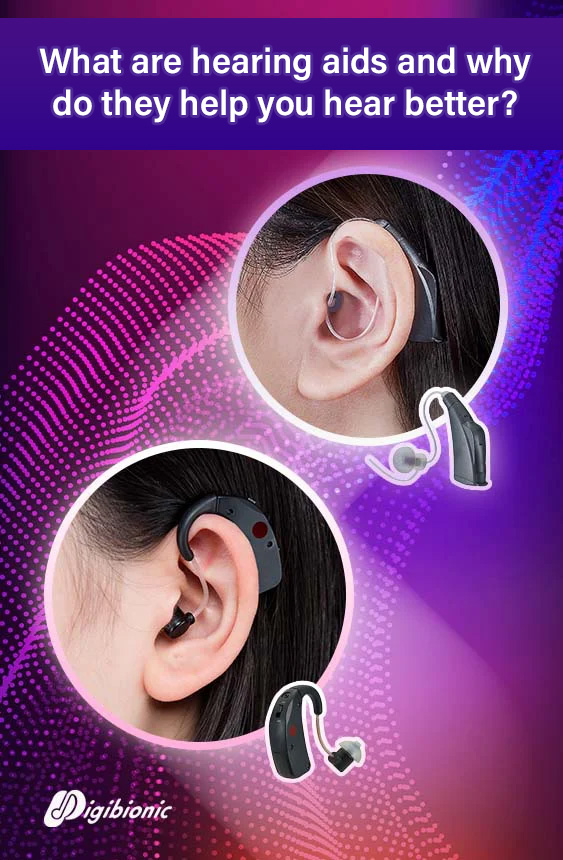
What is a hearing aid? And how does it help people with hearing loss hear again?
A hearing aid is a specialized device designed to amplify sound, enhancing hearing and communication. It consists of the following components:
Microphone
Chip (Processor)
Speaker/Amplifier
Sound tube/Ear mold
Battery
Main body
The main structure includes six key components, and its working principle is: “receive external sound, process and modify it according to customized modes, and deliver the enhanced sound to the eardrum at a higher volume”, allowing those with hearing loss to hear sounds clearly again.
There are four common types of hearing aids in the market:
Behind-the-ear (BTE) hearing aids
Hidden BTE hearing aids
In-the-ear (ITE) hearing aids
Completely-in-canal (CIC) hearing aids
Additionally, we distribute Mimitakara brand hearing aids, which include:
Portable hearing aids
Neckband-style hearing aids
Wireless hearing aids
Various other styles to suit different preferences.
What are the functions of a hearing aid and what can it help with?
Watching TV: If a hearing aid user wants to watch TV programs, such as the morning news every day, a Bluetooth hearing aid can stream the TV sound directly to the device via Bluetooth. This is often the first choice when purchasing a hearing aid.
Phone Calls: For users who want to communicate with family and friends via phone calls or Line daily, a Bluetooth hearing aid can stream conversation sound directly from the mobile phone to the hearing aid via Bluetooth.
Automatic Noise Reduction: If the user is often in noisy environments such as air-conditioned rooms, engine rooms, factories, temples/churches, or other noisy surroundings (including distant human voices, traffic noise, or explosions like firecrackers), it is recommended to choose a hearing aid that automatically filters and reduces background noise.
Automatic Focus on Sound Sources: If the user frequently goes to crowded places (e.g., meetings, lectures, seminars, restaurants), a hearing aid with directional microphone technology is recommended. This allows the device to automatically focus on the main sound source, typically at a 30°–60° angle in front of the user.
Eliminate Echoes: Echoes from speech or environmental sounds can make it difficult for the hearing-impaired user to clearly understand conversations. Older adults often respond with “oh” or “um,” or experience a humming sound after using a hearing aid, indicating that they urgently need a device with echo reduction functionality.
How to Compare and Buy a Hearing Aid
Like choosing eyeglasses, before purchasing a hearing aid, it is recommended to visit a hearing center for a free hearing test and trial fitting. Audiologists and technicians can recommend the most suitable model.
Key criteria for comparing and purchasing a hearing aid include:
Actual hearing loss and level of customization required
Features and price comparison
Available government subsidies
Payment convenience
Warranty duration and conditions
Distance to the store or availability of home delivery/service
Additionally, consider real-life usability and level of customization to ensure the hearing aid meets your daily communication needs.
Customer Service Contacts:
Phone: 02-115-0568
LINE: @187guyvz
Hours: Monday–Saturday, 09:00–18:00 (Closed on Sunday)
เราใช้คุกกี้เพื่อพัฒนาประสิทธิภาพ และประสบการณ์ที่ดีในการใช้เว็บไซต์ของคุณ คุณสามารถศึกษารายละเอียดได้ที่ นโยบายความเป็นส่วนตัว และสามารถจัดการความเป็นส่วนตัวเองได้ของคุณได้เองโดยคลิกที่ ตั้งค่า